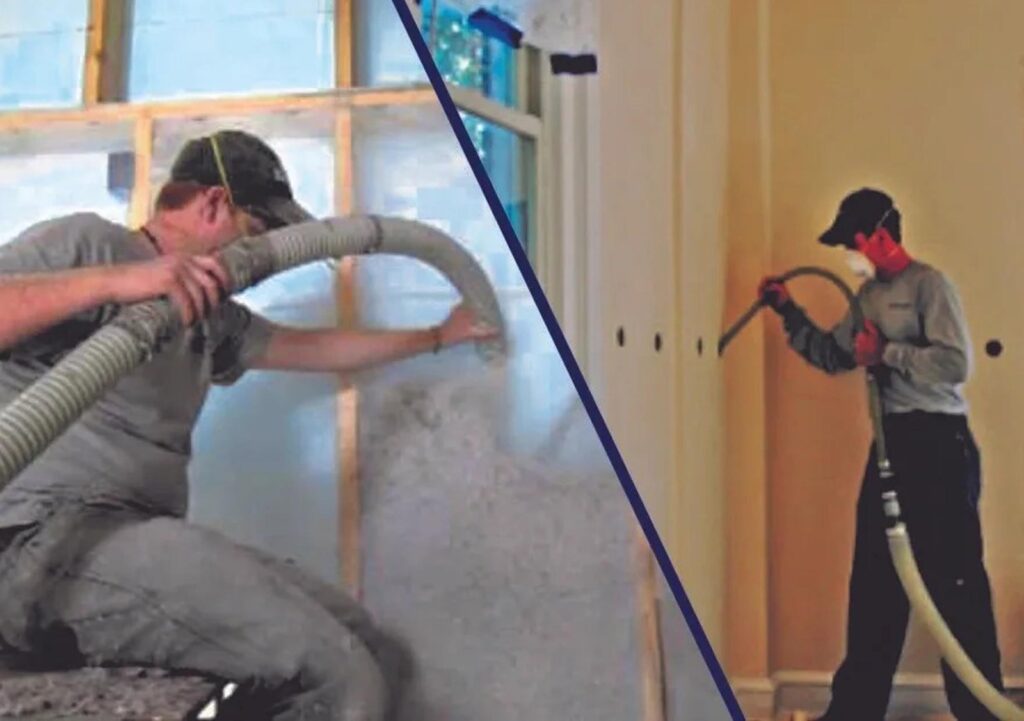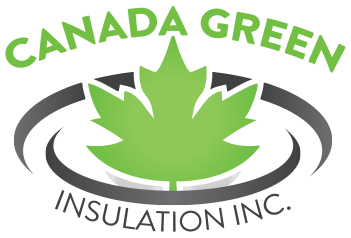
In 2005, Metric Homes of Carp, Ontario designed and built Canada’s first Energy Star labelled home in Canada. This home was built with dense-packed (or dense-blown) cellulose as the wall insulation of choice. Their intent was to produce a better built home with the goal of creating “a proper balance between additional efficiency and price such that it would be attractive to future clients”.
Dense-packed cellulose insulation can be a superior product to commonly used batt insulation, but somehow it has developed a bad reputation in Canada. Cellulose Fibre Insulation (CFI) is like the Rodney Dangerfield of insulations, it “can’t get no respect”.
When done right, dense-packed cellulose is a highly efficient option for insulating exterior walls. It insulates as well if not better than the average batt (R3.5-3.8/inch), and slows air flow through walls making your house cheaper and easier to heat and cool. In addition, the high density of packed cellulose provides you with a better sound barrier than batt insulation (1).
Modern CFI production began in the 1970s and has been commonly used in roofs across the globe and walls throughout the US and Europe. When cellulose is densely blown (3.0lbs/ft3 or 48kg/m3 or greater) it is an excellent wall cavity insulation that provides a good R value at a reasonable cost. However, it is seldom used in Canada despite its reasonable cost and efficiency.
It has been unfairly criticized for its ‘settling’ issues, mold issues and its flammability. CFI has fallen victim to the claims of safer, easier and ‘better’ options such as fiberglass or mineral wool batt insulation. These weaknesses are largely baseless and dense-packed cellulose for wall cavities should be more common in Canada than it is today.
The concern of cellulose in wall cavities settling is probably the biggest misconception, though it is one that originates legitimately because that’s what used to happen when it was blown into walls loosely, as it presently is in ceilings. Cellulose in walls is now under pressure so it cannot settle, maintaining the overall performance of its installed R-value. Any warnings on packages of settling is directed at cellulose loosely blown into ceilings.
CFI is commonly manufactured with borate, which is a fire retardant that also resists mold and and insects. In fact borate, in small amounts, has been determined to be largely harmless. “Most common foods contain borates at concentrations of 1-20 ppm, so we ingest up to 1mg/day in our normal diets” and it is certainly less harmful than many toxins found in various adhesives and finishes commonly used in housing construction.
As well, CFI with borate is considered to be more flame resistant than both fiberglass and mineral wool batts. The dense packed method in and of itself adds to the flammability resistance. Consider how hard it is to burn a phone book versus burning a single sheet of paper. The lack of air gaps and air circulation make burning a phone book much more difficult than burning a single sheet.
If you are looking to insulate using the greenest of options, CFI is probably for you. It is often manufactured regionally using upwards of 80% recycled materials, acts as carbon storage and requires significantly less energy to manufacture than any batt insulation on the market. Not to mention it will likely get you additional LEED points in any evaluation.
As this is a wood product that has been heavily processed, it is at greater risk of moisture damage than some other materials if not handled and installed properly. But this can be said of many components of a home, and rather than dissuade us from using cellulose, it should encourage us to ensure we use proper building techniques; stopping air leakage and managing moisture diffusion through walls.
The biggest weakness for dense-blown cellulose is the lack of understanding of its qualities and effectiveness. For example Ontario Building Code has only a short section stating that dense-blown cellulose meets code, Section 9.25.2.2, but offers very few details or further explanation.
